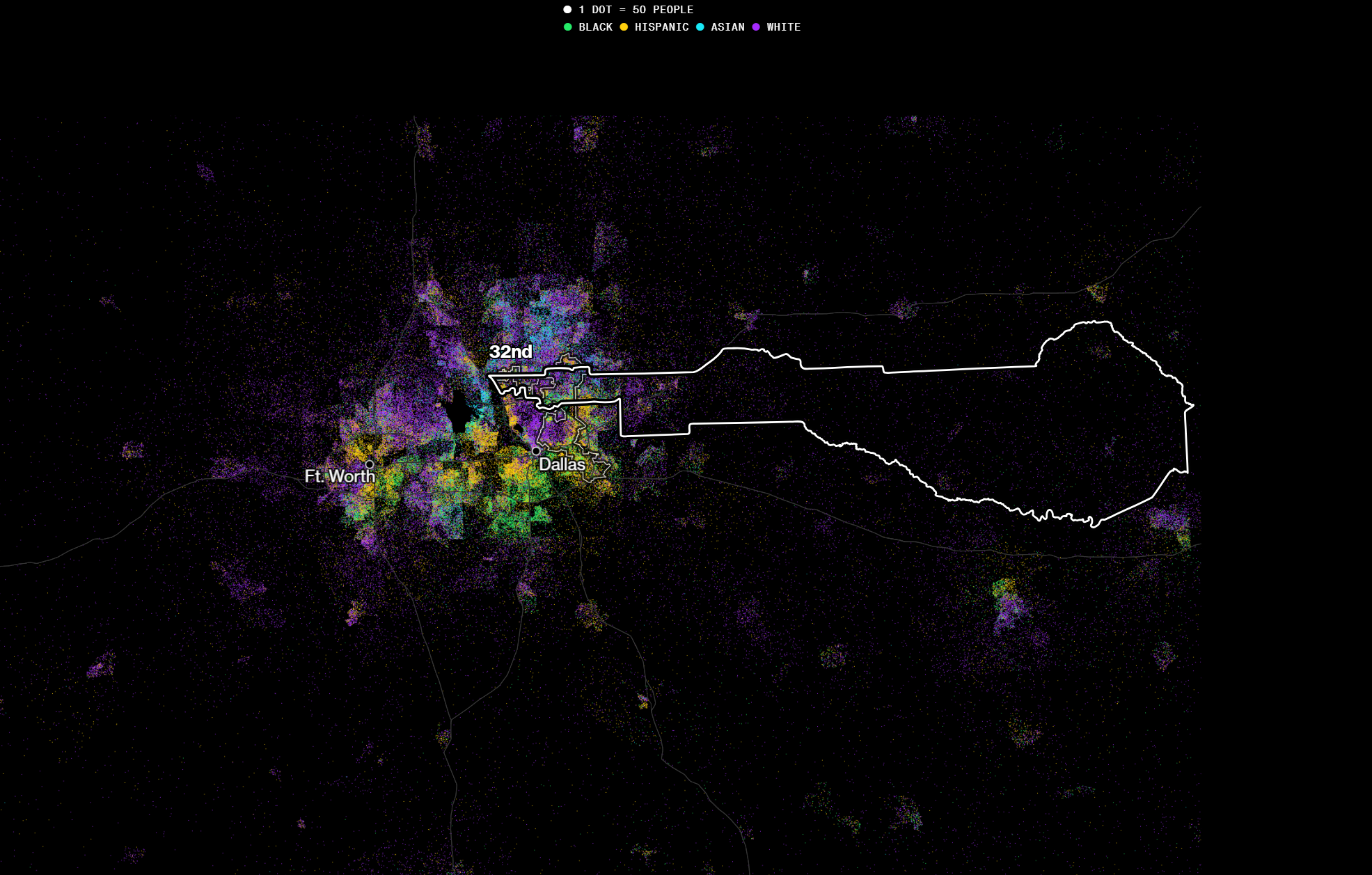| The US government began its first shutdown in nearly seven years, after Congress failed to pass a spending bill on Tuesday. Republicans are weighing sweeping cuts to federal staff and spending, while Democrats presented the confrontation as a clash over health-care coverage. Both parties are hoping to frame the narrative around the shutdown in their favor, particularly as they seek control of the legislative body after next year’s midterm elections. Meanwhile, a redistricting battle in Texas could also help reshape the next Congress. This week, federal judges in El Paso will weigh the legality of a newly drawn congressional map that could give Republicans as many as five new seats in the House of Representatives. Black and Hispanic groups sued in August to block the map’s adoption, arguing that it unlawfully dilutes the voting power of racial minorities.  District 32, a multiracial voting district held by Democrat Julie Johnson, would be stretched 100 miles east into rural Texas. Credit: Elena Mejía “It basically takes those Black and brown communities and splits them up amongst Republican districts,” said Democratic Congressman Marc Veasey. His district in Fort Worth, according to analysis by Bloomberg, would be split into three districts to include voters from mostly white, rural areas. Republicans, however, say race played no role in how the map was drawn. The national stakes are high as Republicans currently hold a narrow majority in the House, and as Democrats look to retake control and more closely scrutinize the Trump administration’s actions. But there are reasons for both parties to be cautious, Elena Mejía and Joe Lovinger write. Today on Bloomberg: Texas Redistricting Case Could Reshape House Balance After 2026 Midterms — Linda Poon |